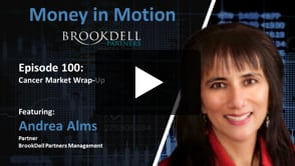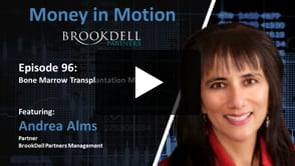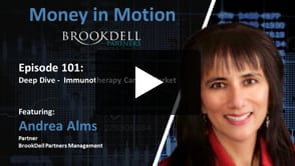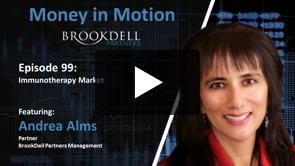Hedge Fund Dashboard:
Top Hedge Fund News, Member Posts, Hedge Fund Daily Indices and more!
When Crispin Odey is happy, most other hedge fund managers are not.
The market bear’s 7.4% gain in October was in stark contrast to the losses suffered by the industry in general. Equities and managed futures funds were badly hit as Europe’s hedge funds lost a median 1.9% in their second-worst month since 2008.
With two months of 2018 remaining, the losses leave the industry in negative territory for the year. EuroHedge reviews a damaging month in which some funds gained but many more lost ground – and asks what went wrong.
Declining equity
Long/short equity hedge funds were badly hit as markets reversed and sold off, with the S&P 500 Index having its worst month since September 2011. “Markets have grown more volatile as earnings growth appears to have peaked and rates have moved higher,” said Man Group’s hedge fund investing unit, FRM, in a research note.
Several of Europe’s blue-chip equity names, including Pelham Capital and Lansdowne Partners, suffered heavy flagship losses. Ross Turner’s Pelham, a four-time EuroHedge award winner, lost 13.1% in the dollar share class of its $5bn long/short flagship, putting it down 8.8% for the year. Lansdowne lost 3.7% in the dollar class of its $8.8bn Developed Markets flagship, leaving it down 1.6%.
“Equity long/short managers detracted broadly in line with their beta exposures,” said FRM. “But managers with higher net exposure generally struggled more on the alpha side of the equation as well, having to take down exposure in reaction to losses.” By sector, investors in big-name technology stocks were hit as the “FAANG” group (Facebook, Apple, Amazon, Netflix and Google) suffered heavy losses in October.
Lansdowne and Pelham were far from the only equity names in the red. A pair of Sloane Robinson funds which won awards last year lost ground. SR Global Opportunities, which made 31.7% in 2017, was down 3.9%, putting it down 13% for the year. SR Global International, up 27.7% in 2017, lost 3.8% and is down 15% for the year.
Geneva-based Philippe Jabre’s Global Balanced fund was down 17.3%, putting it down 31.5% for the year. Odey, another industry veteran, was the exception in equities as a strong month put his flagship up 51.1% for the year, making it the top-performer in Europe across all strategies.
“Going forward, we believe that market concerns are overdone and expect the market rebound to consolidate,” said Paris-based investor Lyxor Asset Management. “The challenge for equity long/short managers is whether to maintain sufficient risk to benefit from any market recovery while risk managing losses at the position and portfolio level,” said FRM in their note.
Trend ≠ friend
Trend-followers plunged in October, suffering their second worst month of a volatile year as markets worldwide crashed. The SG Trend Index, which tracks performance among the 10 largest trend-following funds globally, fell 4.3%, almost doubling its decline this year.
Sharp reversals across commodities markets including power, oil, gold and silver took their toll on CTA performance. Stockholm-based Lynx, the largest fund in the Brummer stable, lost 3.6% in October and is now down 4.2% for the first 10 months. Transtrend’s Enhanced Risk program lost 6.7%, putting the fund down 5.1%
“CTAs underperformed due to the trend reversal across asset classes seen earlier in the month,” said Lyxor. A sell-off later in October was less damaging than the initial reversal to trend-followers, which suffer most when trends change direction rather than deepen.
Aspect Diversified lost 9.2%, leaving it down 12.1% for the year, while Leda Braga’s BlueTrend lost a more moderate 2.9% but remains down 11.2% for the year.
Fortunes for trend-followers had not improved at the time of writing, with the SG Trend Index losing a further 3.2% in the month to 19 November, leaving it down 10.3% for the year.
Cantab’s difficult year continued, posting heavy losses throughout its fund range. The Cambridge-based manager, which is part of GAM Systematic, lost 8.2% in its $1bn Aristarchus flagship, putting it down 27% for the year with two months remaining.
The fund made 31% last year. The firm’s Core Macro Fund lost 6.2% in its Mersenne share class last month, putting it down 16% for the year, while Systematic Discovery lost 4.7% in October, putting it down 13.1%.
Zurich-based parent GAM parted ways with CEO Alexander Friedman last month, three months after the surprise suspension of star fund manager Tim Haywood. Earlier this year GAM admitted it faced write-downs connected to its purchase of Cantab because assets were lower than forecast at the time of the deal.
Boost for macro
If one strategy stood out during a bleak month for European hedge fund performance, it was global macro. One of the sector’s main players, Brevan Howard’s $3.7bn flagship fund, rose 1.2% and is now up 11.6% for the year.
“Discretionary macro managers have generally benefited from the resumption of US dollar strength across the board as well as the underperformance of US fixed income against Europe,” said Man Group in their note. “Divergent monetary policy, differing growth outlooks, and idiosyncratic regional politics continue to underpin the global macro outlook.”
Paul Brewer’s Rubicon Global Fund rose 5%, putting it up 8.3% for the year. Interest rate and macro-focused Nectar rose 0.5% after notching up small gains in bond markets, making it the biggest riser (and one of only three to gain at all) on the Brummer platform last month.
It was a mixed picture for credit in October. “Credit long/short managers as a group outperformed the long-biased distressed managers with losses for the latter driven by exposure to post-reorg and value equities,” said FRM. In event-driven, special situations funds fared worst due to their high beta, while merger arbitrage proved more resilient, said Lyxor.
A happy end to 2018?
BlueBay’s Mark Dowding saw grounds for cautious optimism in early November of “happier days ahead” after the October reversals. But the turnaround had not occurred by mid-November, with the S&P 500 at similar levels to where it ended October and the FTSE 100 slightly lower. In other areas, particularly oil markets, prices had deteriorated.
It leaves many of Europe’s hedge funds facing a serious battle to end 2018 in positive territory. They must decide how risk-off to remain – comparing the potential cost of missing out a rally with the actual current cost of deepening losses – as the final weeks of the year approach.
Red October: review of a horror month for industry on EuroHedge.
Today's Hedge Fund Headlines:
Access Over 250K+ Industry Headlines, Posts and Updates
Join AlphaMaven
The Premier Alternative Investment
Research and Due Diligence Platform for Investors
Free Membership for Qualified Investors and Industry Participants
- Easily Customize Content to Match Your Investment Preferences
- Breaking News 24/7/365
- Daily Newsletter & Indices
- Alternative Investment Listings & LeaderBoards
- Industry Research, Due Diligence, Videos, Webinars, Events, Press Releases, Market Commentary, Newsletters, Fact Sheets, Presentations, Investment Mandates, Video PitchBooks & More!
- Company Directory
- Contact Directory
- Member Posts & Publications
- Alpha University Video Series to Expand Investor Knowledge
- AUM Accelerator Program (designed for investment managers)
- Over 450K+ Industry Headlines, Posts and Updates







